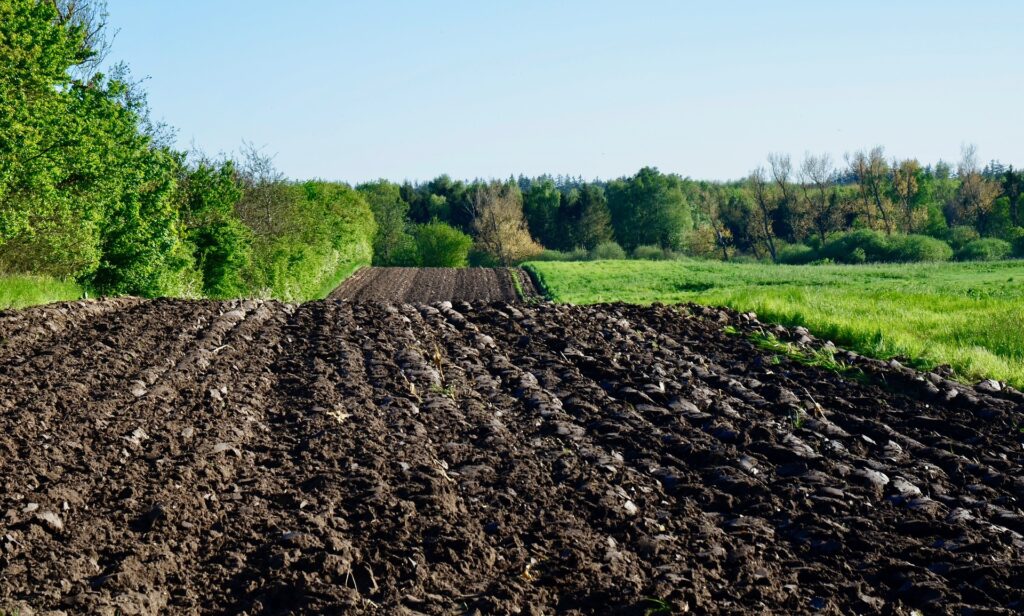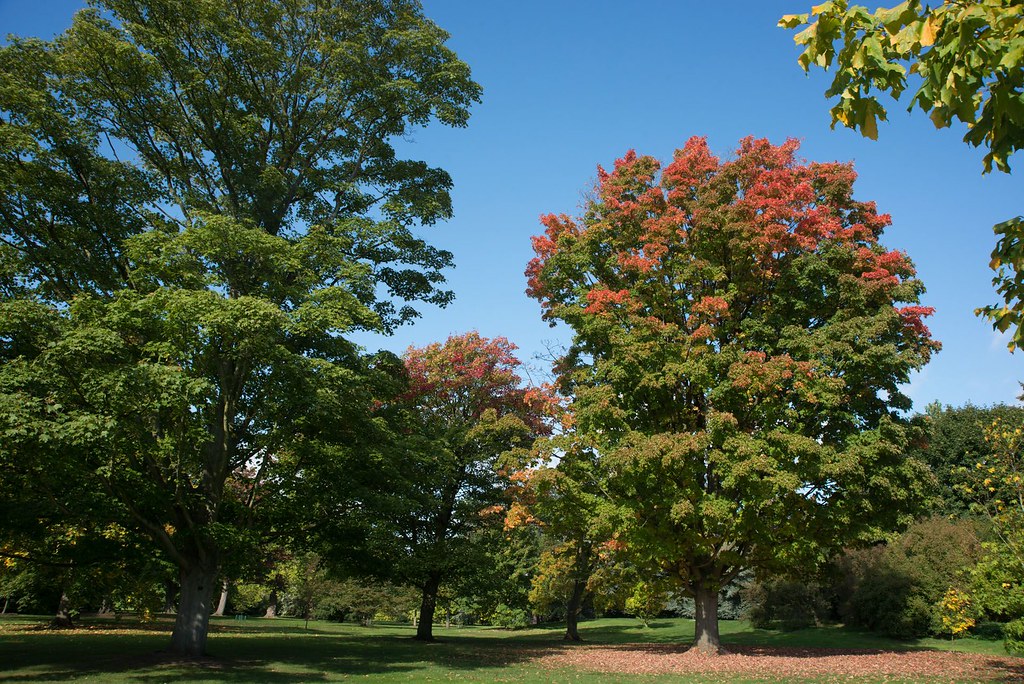Foundation shrubs are the backbone of any landscape.
They’re the plants that serve as a backdrop for the rest of your garden’s foliage, and they can help create a sense of depth and dimension in your yard.
They provide structure, color, and texture.
With their vibrant colors and versatile use, shrubs can make any outdoor area look amazing.
From evergreens to flowering options, these shrubs are sure to bring life to even the most drab yard.
There are dozens of shrub species to choose from for each location and climate.
Start with the right foundation shrubs, if you want to create a foundation for your garden that will last for years to come, .
These are some of the more popular varieties for or area.
Azaleas:
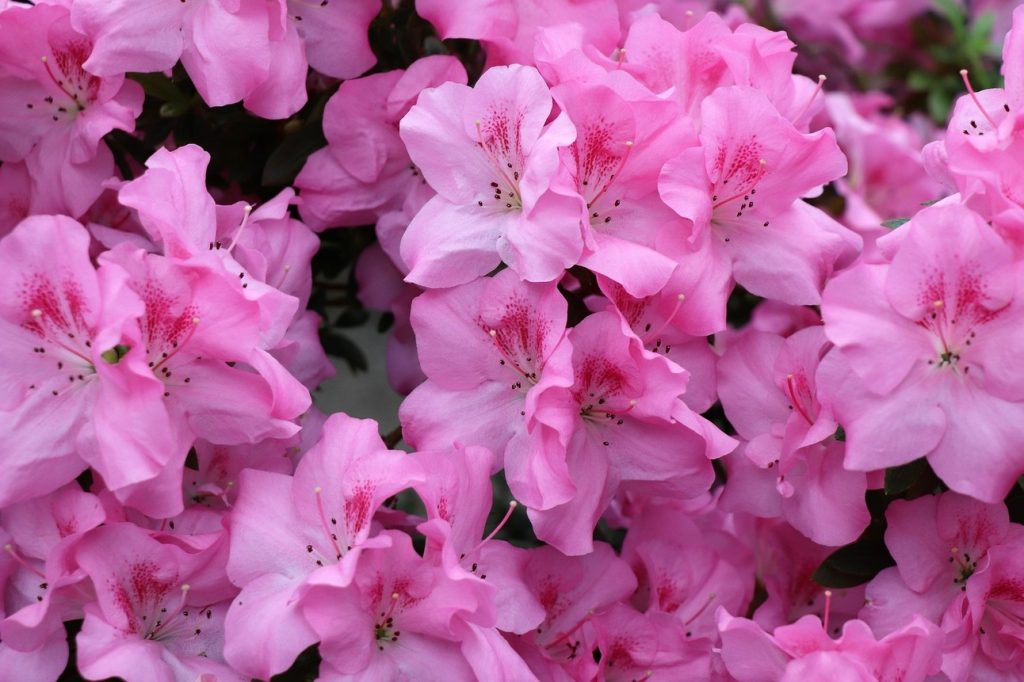
Azaleas are one of the most popular foundation shrubs for landscapes and gardens.
These evergreen shrubs are known for their stunning blooms that range in color from white to pink, red, purple, and even orange.
They come in various sizes, from compact dwarf varieties to larger specimens that can reach up to 20 feet tall.
One of the many advantages of azaleas is that they require minimal maintenance once established.
They thrive in acidic soil with good drainage and partial shade, making them an ideal choice for homeowners who want to add some color to their yard without spending a lot of time on upkeep.
They require occasional pruning to maintain their shape, but are generally low-maintenance.
Furthermore, azaleas produce long-lasting flowers that can bloom for several weeks each season.
Another benefit of azaleas is their versatility in landscaping design. They make excellent borders or hedges along walkways or fences and can be used as accent plants near entryways or alongside other flowering shrubs like camellias or gardenias.
With its variety in size and colors, this fantastic shrub is sure to add charm and beauty no matter where you plant it!
Camellias:
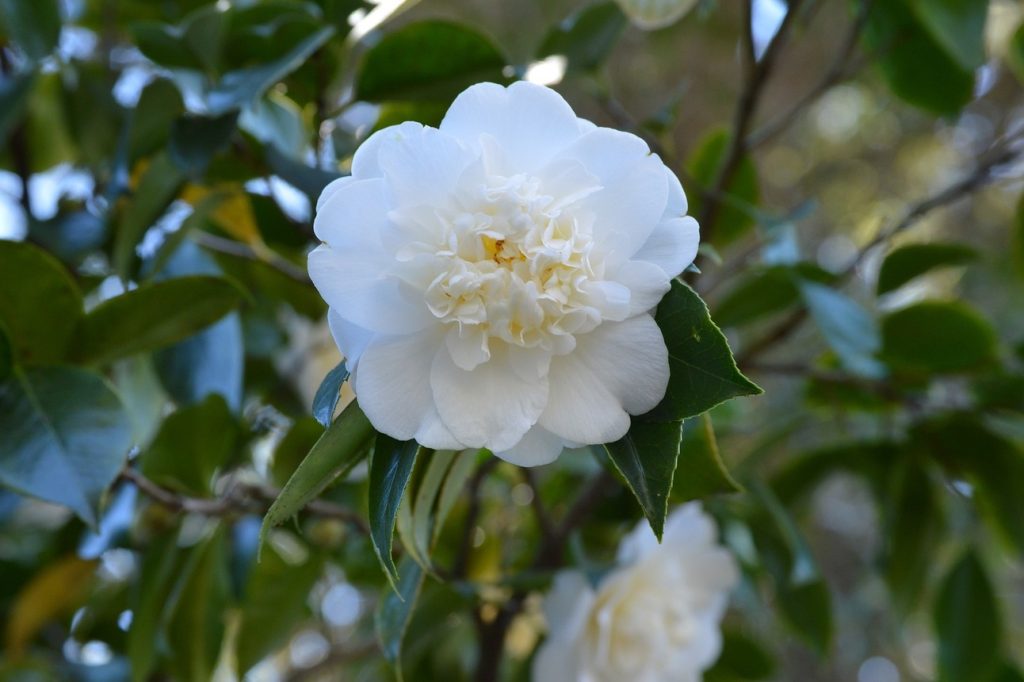
Camellias have long been a go to choice for foundation shrubs that offer both beauty and functionality.
They can be used as a specimen plant, in mixed borders, or as a foundation planting.
These evergreen shrubs are known for their glossy green leaves, stunning flowers, and easy maintenance.
Camellias come in a variety of colors and sizes, making them versatile enough to fit into any landscape or garden design.
They are known for their beautiful blooms in shades of pink, red, and white, which bloom when most other plants are dormant or not blooming.
In addition to their aesthetic appeal, camellias also offer practical benefits.
They can be used as a privacy screen when planted close together, and their dense growth habit helps to block out noise and wind.
Camellias also provide year-round interest with their dark green foliage providing visual interest even when they’re not in bloom.
Camellias are disease-resistant and low-maintenance, making them a great choice for busy gardeners.
Camellias can tolerate full sun with adequate watering, bt they prefer partial shade and well-drained soil.
These features make them ideal for planting under large trees or near north-facing walls.
camellias can add an elegant touch to your home’s landscaping with proper care and maintenance. So, why not consider them for your garden?
Boxwood:
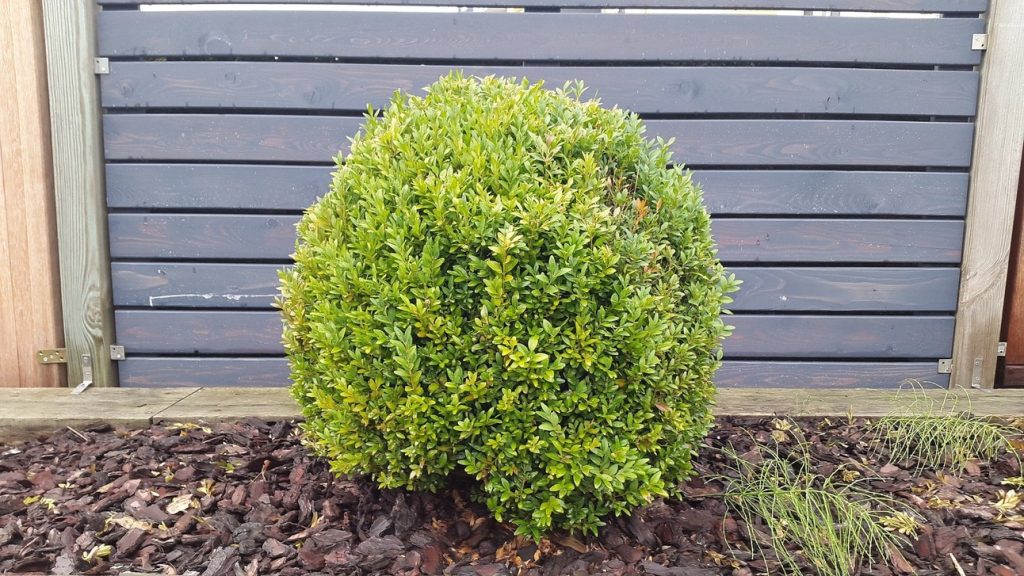
Boxwood is an evergreen shrub that thrives in mild climates.
Boxwoods have long been widely distributed throughout Europe, Asia and Africa.
These plants are incredibly versatile, being used worldwide in various landscape and garden applications.
One advantage of boxwoods is their versatility in trimming.
Topiary works well with these small leaves due to their delicate nature.
Boxwood trees are popular hedging options due to their ease of shaping and upkeep, making them an ideal choice for landscape designers.
Due to this versatility, they can be maintained in any size – from modest hedges to substantial privacy screens.
Moreover, boxwoods are noted for their thick foliage, which provides good protection from the elements and wildlife.
Additionally, boxwoods are known for their dense foliage, which provides excellent coverage against the elements and wildlife.
Aside from being visually appealing, boxwood has many other benefits as well.
They can help purify air by removing pollutants in certain applications.
They also help reduce noise pollution; since its thick leaves absorb sound waves effectively.
Overall, boxwood is an excellent choice for anyone looking to add beauty and functionality to their landscape or garden.
Gardenia:
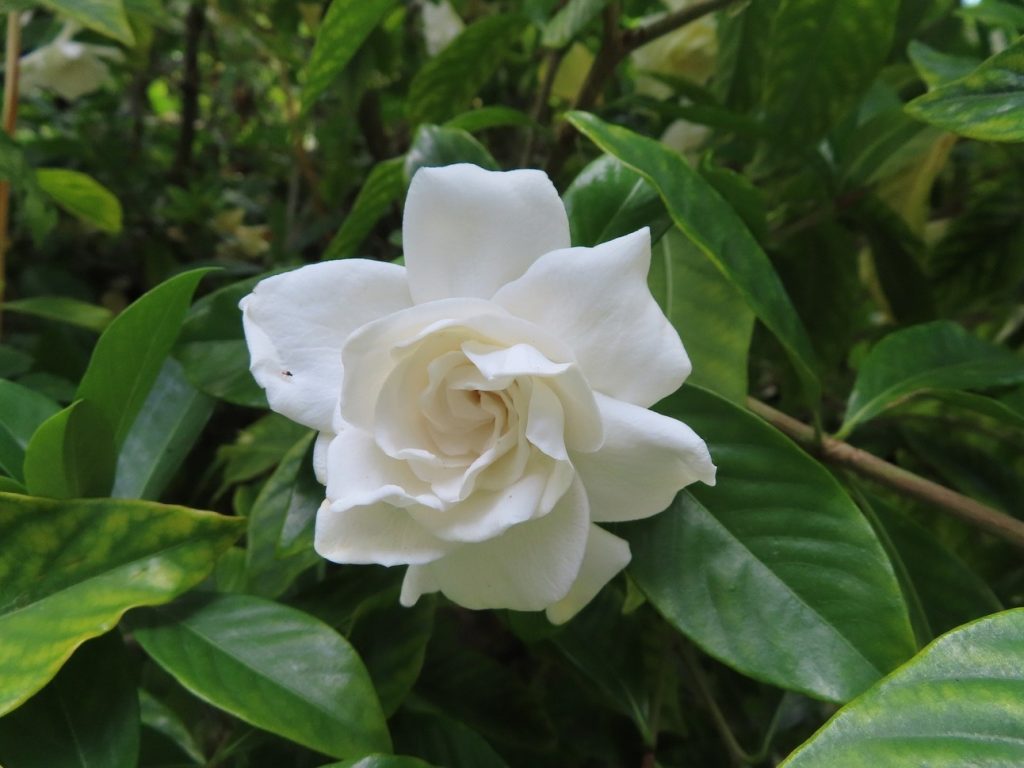
Gardenias are a must-have for any landscape garden enthusiast.
With their beautiful, fragrant white flowers and glossy evergreen foliage, they make for a truly stunning addition to any outdoor space.
Gardenias are known for their sweet, intoxicating scent, which is why they are commonly used in perfumes and scented candles.
In landscape design, Gardenias make great foundation plantings or specimen plants.
They thrive in well-draining, acidic soil and require ample water and sunlight to thrive.
Gardenias can grow up to 6 feet tall and wide, so be sure to give them plenty of room to spread out.
One of the best things about Gardenias is that they bloom repeatedly throughout the summer months, providing a steady source of beauty and fragrance for your garden. Their flowers are also a favorite of butterflies and humming making them great enthusiasts.
Most gardenias require minimum, regular pruning to maintain their shape; but they can be susceptible to pests and diseases.
They can be used as a specimen plants or as a foundation planting.
So looking to some beauty and fragrance to your landscape garden, consider planting a Gardenia. Your senses will thank you for it!
Nandina:
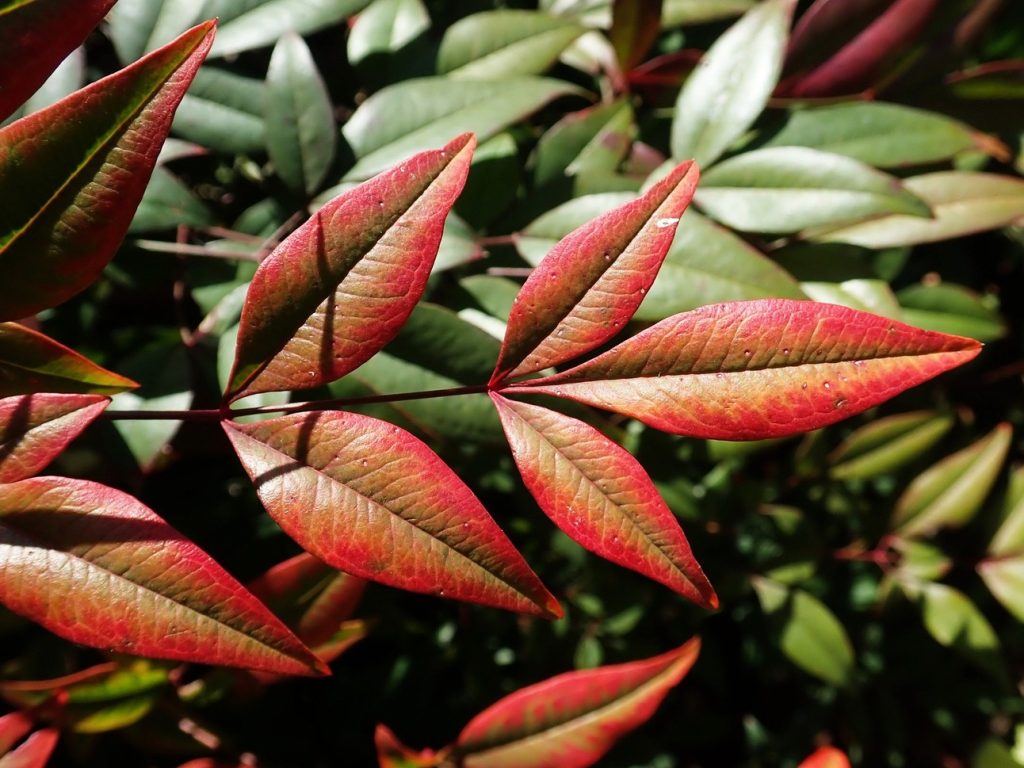
With its bright green foliage that turns burgundy in winter, Nandina has the ability to add year-round interest to landscaping and gardens.
But that’s not all it offers!
Nandina, also known as heavenly bamboo, is a versatile evergreen shrub that can add visual interest to any garden or landscape.
With its delicate foliage and vibrant red berries that appear in the fall, it’s no surprise that nandina has become a popular choice for both residential and commercial landscapes.
One of the best features of nandina is its ability to thrive in a variety of environmental conditions.
It can tolerate full sun or partial shade and doesn’t require much maintenance beyond occasional pruning to shape it as desired.
Nandina is also easy to prune, making it a versatile shrub for any garden.
Additionally, nandina is fairly drought-tolerant and resistant to pests and diseases.
Another benefit of nandina is its versatility in design.
It can be used as a foundation planting, in mass plantings, or as a specimen plant.
It works well as a low hedge or border plant but can also be used as an accent plant or specimen shrub depending on the desired effect.
And with several varieties available that range from compact dwarf plants to larger specimens, there’s sure to be a type of nandina that fits your landscaping needs.
Viburnum:
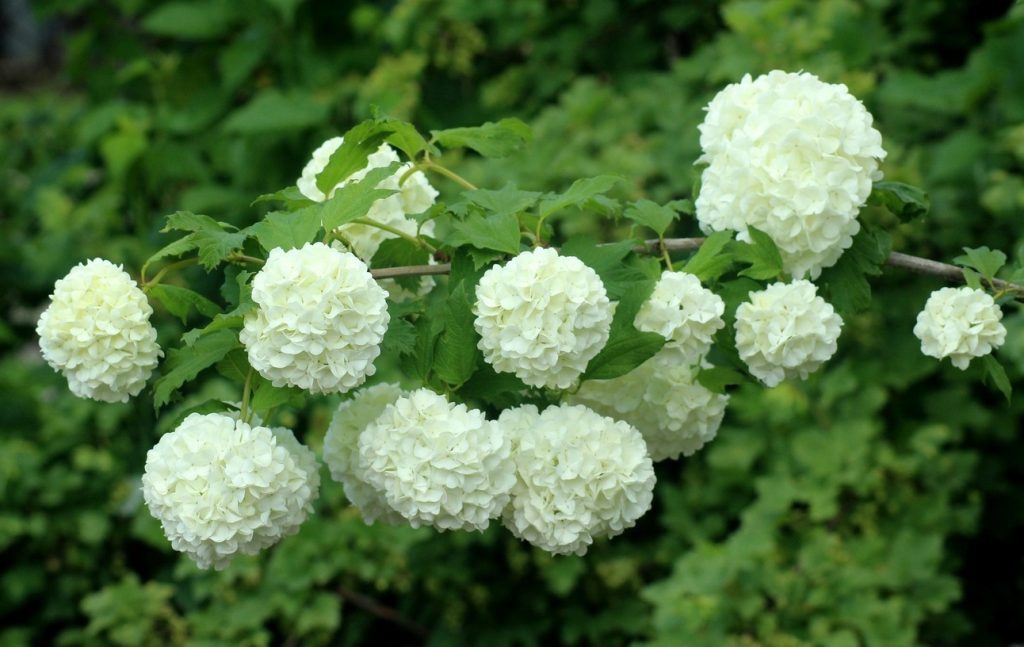
Looking for a substantially versatile and beautiful shrub for your landscape garden,
Viburnum may be just what you need!
Viburnum is famous for its clusters of fragrant flowers that bloom in the spring, followed by colorful berries in the fall.
It produces elegant flowers in shades of white and pink, and also has attractive foliage.
It grows up to 15 feet tall and wide, which makes it an excellent option for privacy borders and large spaces.
Viburnum is low maintenance, deer resistant, and attracts birds and butterflies.
Viburnum is a versatile shrub that is well-suited for moderate climates.
It’s often used as specimen plants, or hedge, and looks great in mixed borders or woodland gardens.
So if you want to add some color, texture, and wildlife to your landscape garden, consider Viburnum!
Viburnum prefers well-drained soil and partial shade, which makes it ideal for planting under large trees.
Hoping to add a flexible and lovely bush to your scene plant? Look no farther than Viburnum! This fabulous bush is popular for groups of fragrant blossoms sprout in the spring, trailed by brilliant berries in the fall.
With rich blossoms in shades of white and pink, and alluring foliage, Viburnum can grow up to 15 feet tall and wide, making it a brilliant choice for protection lines and huge spaces. Also, it’s low support, deer safe, and draws in birds and butterflies, making it a superb expansion to any garden.
Viburnum is a flexible bush that flourishes in moderate environments. It’s frequently utilized as example plants or supports and looks fabulous in blended boundaries or forest nurseries. Also, assuming that you favor halfway shade, Viburnum is ideally suited for establishing under enormous trees.
Thus, if you need to add some tone, surface, and untamed life to your scene garden, Viburnum is an amazing decision! Simply try to establish it in very much depleted soil to watch it flourish.
Ligustrum:
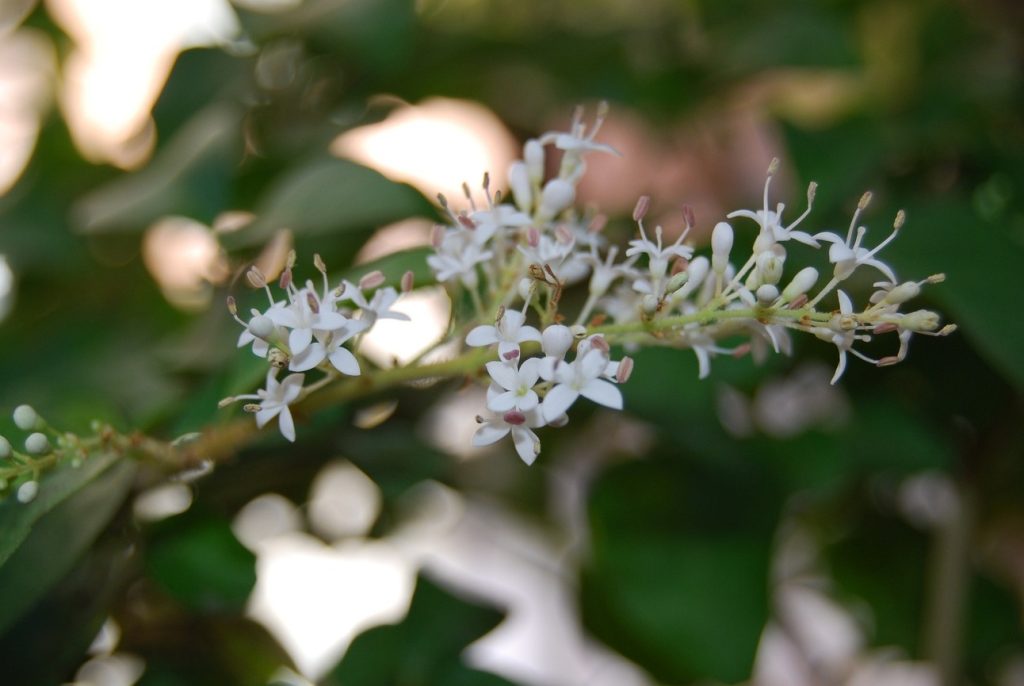
Meet Ligustrum, also known as privet – the popular foundation shrub found in many landscapes and gardens.
This evergreen shrub boasts glossy green leaves that provide year-round interest.
And the best part? It’s easy to grow and requires little maintenance, making it perfect for those who want a low-maintenance garden.
One of the benefits of Ligustrum is its versatility.
It can serve as a foundation planting, accent plant, or container plant, and looks incredible in mixed borders or formal gardens.
It can also be used as a hedge or screen plant to provide privacy in your yard, or as a standalone specimen plant to add visual interest to your landscape design.
Ligustrum can grow up to 10 feet tall and wide, making it perfect for hedges or screens. The shrub produces small white flowers in the spring and summer, which are attractive to bees and other pollinators.
So, if you’re looking for a versatile, low-maintenance shrub that adds year-round interest to your landscape and attracts pollinators, Ligustrum is an excellent choice!
Ligustrum comes in several different varieties, including Japanese privet (Ligustrum japonicum) and Chinese privet (Ligustrum sinense).
These varieties have slightly different characteristics, such as leaf shape and size, but they all share the same hardiness and low-maintenance requirements.
- its andrant white flowers that bloom in the spring.
- Ligustrum is low maintenance, drought tolerant, and deer resistant.
- is a fast-growing evergreen shrub that is perfect for creating hedges or borders in moderate climates.
- a great choice for novice gardeners.
- It can be used as a hedge, border, or foundation planting.
Overall, ligustrum is an excellent choice for anyone looking for an attractive foundation shrub that will provide year-round beauty with minimal effort. So if you want to add some elegance and privacy to your landscape garden, consider Ligustrum!
Indian Hawthorn:
Indian Hawthorn (Raphiolepis indica) is a popular and versatile evergreen shrub that is native to Asia, but has become a favorite in moderate climates around the world. This shrub is known for its graceful habit and its ability to add beauty to any landscape with its stunning pink or white flowers that bloom in the spring and summer. These flowers are followed by attractive, which attract birds and add interest toIndian up to 6 feet tall and 6 feet wide proper care. It prefers well-draining soil and partial sun to full sun exposure, but can also tolerate some shade.This shrub is both pest- and disease-resistant, making it an easy-care option for your garden.
Indian Hawthorn is not only beautiful and hardy, but also versatile enough to be used in various landscape settings. It can be mixed into borders for color and texture or used as a foundation planting to provide year-round interest. Alternatively, Indian Hawthorn looks amazing as an individual specimen plant, where its graceful habit can be fully appreciated.
Its durability and ease of maintenance make it a great choice for both novice gardeners and experienced landscapers.
Indian Hawthorn is an ideal choice for gardeners seeking a low-maintenance shrub to add visual interest and charm to their landscape. With its stunning flowers, glossy foliage, and hardiness, this plant will remain a favorite for years to come.
Indian Hawthorn is an evergreen shrub ideal for moderate climates. It produces lovely pink or white flowers in the spring and summer, while its glossy foliage adds beauty to any landscape. Plus, this low maintenance choice for gardening comes with pest- and disease resistance too, making it the ideal low maintenance choice in your garden. You can use Indian Hawthorn in mixed borders, as a foundation planting or as a specimen plant.
Dwarf Yaupon Holly:
Dwarf Yaupon Holly is an ideal addition to any landscape garden! This evergreen shrub stands at a compact size, making it perfect for smaller areas or as a low hedge. It boasts a dense bushy habit with small, glossy leaves that provide a stunning backdrop for its small white flowers in springtime. Additionally, this shrub produces bright red berries in fall and winter that add an eye-catching pop of color during colder months.
Dwarf Yaupon Holly is an easy-care plant that thrives in a range of growing conditions. It prefers well-drained soil with full sun to partial shade exposure, but can also withstand some drought and salt spray – making it the perfect choice for coastal gardens or areas prone to harsh environmental elements.
Dwarf Yaupon Holly is not only gorgeous and hardy, but it’s highly adaptable in the landscape. Use it as a low hedge or border plant, or add interest with its specimen status by mixing in mixed borders or containers.No matter its shape or size, Dwarf Yaupon Holly makes for a stunning addition to any landscape!
Dwarf Yaupon Holly is an ideal choice for gardeners seeking a low-maintenance shrub to add visual interest and visual depth to their landscape. With its compact size, glossy foliage, and vibrant berries, this plant will surely remain popular in years ahead.
Dwarf Yaupon Holly is an ideal foundation shrub for landscapes and gardens. This hardy evergreen can withstand extreme heat, drought, and salt spray with ease, growing up to 4-6 feet tall and wide – ideal for planting in tight spaces or as a low hedge.
Dwarf Yaupon Holly stands out with its lush foliage. The small leaves remain glossy green year-round, providing a striking backdrop for other garden plants.. In the spring, this shrub produces small white flowers that are followed by bright red berries that persist through winter. These berries not only add color to your landscape but also provide food for birds during the colder months.
Another advantage of Dwarf Yaupon Holly is its versatility. It can be planted in full sun or partial shade and adapts well to most soil types. This plant requires little maintenance once established but should be pruned regularly to maintain its shape and size. Overall, Dwarf Yaupon Holly is an excellent choice for anyone looking for a hardy, low-maintenance foundation shrub with year-round interest.
Dwarf Yaupon Holly is an easy-to-maintain shrub that is perfect for moderate climates. It produces small, glossy leaves and small, red berries that add a splash of color to any landscape. This shrub is drought-resistant and can tolerate a variety of soil types. It can be used as a hedge, border, or foundation planting.
Dwarf Bottlebrush:
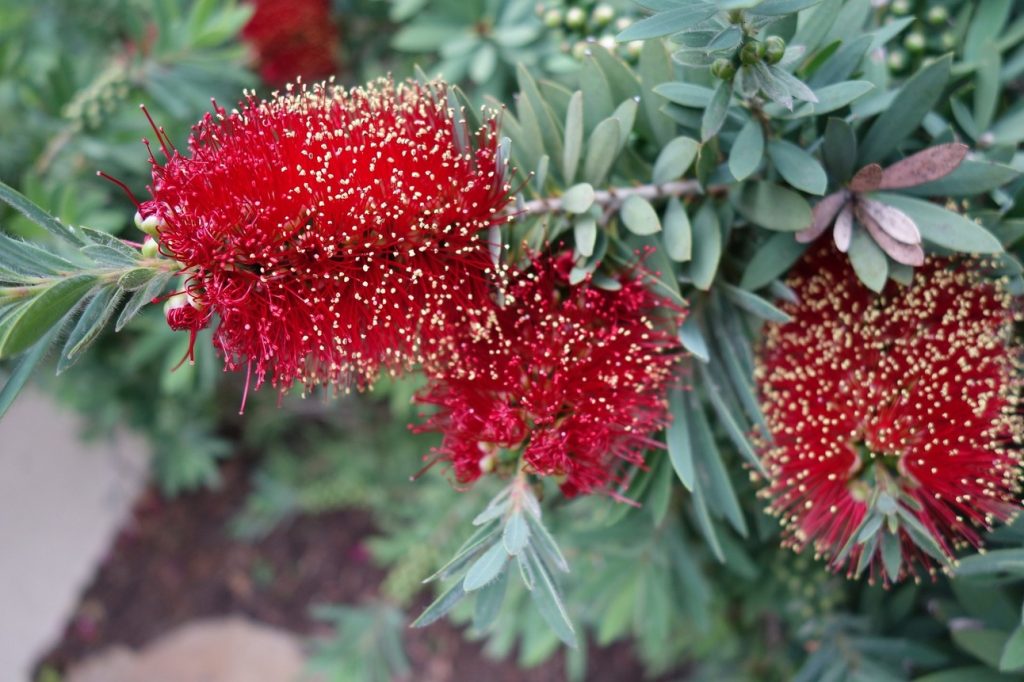
Dwarf Bottlebrush is a small shrub with striking red flowers that resemble bottlebrushes. It is an excellent addition to any landscape or garden due to its unique appearance and low maintenance needs. The plant can grow up to 6 feet tall, but dwarf varieties are available that stay much smaller.
Dwarf Bottlebrush thrives in warm climates and can tolerate drought conditions once established. This makes it an ideal choice for areas that experience hot summers and limited rainfall. The shrub also attracts hummingbirds and other pollinators, making it an important addition to any garden concerned with supporting local wildlife.
The plant’s striking blooms appear in spring and summer, creating a colorful display in gardens or landscapes when other plants may not be flowering. With proper care, Dwarf Bottlebrush can live for many years, providing homeowners with a long-lasting investment in their outdoor spaces.Overall, this hardy yet beautiful shrub is an absolute must-have for anyone wanting to add color and interest to their yard without spending too much time maintaining it.
This evergreen shrub is renowned for its striking red bottlebrush-like flowers that bloom in spring and summer, drawing in hummingbirds and other pollinators.
The Dwarf Bottlebrush is a small shrub that grows up to 5 feet high and wide, ideal for smaller gardens or as a low hedge. Its narrow dark green leaves add visual interest even when not in bloom, plus this shrub is drought-tolerant and low maintenance – ideal for busy gardeners!
Dwarf Bottlebrushes are not only beautiful and hardy, but they’re also highly versatile plants that can be used in various landscape settings. As a focal point plant to add some vibrant color and texture to your garden, or as low hedge or border plants for privacy. It looks great mixed in with other flowers or as part of a container arrangement too!
Overall, the Dwarf Bottlebrush is an ideal choice for gardeners seeking a low-maintenance shrub to add interest and charm to their landscape. With its stunning flowers, eye-catching foliage, and hardiness, this plant will remain popular for years to come.
What about you, my friends? Do you get that vibe when someone you care about asks you out on a date or just because? No questions asked? Have an amazing evening everyone!
Dwarf Bottlebrush is an eye-catching shrub with vibrant red brush-like flowers that attract hummingbirds and butterflies alike. Its drought resistance makes it suitable for areas with limited water availability, while only occasional pruning is required to keep its shape. You can use Dwarf Bottlebrush as either a single specimen plant, mixed border plant or foundation planting depending on your preference.
Oleander:
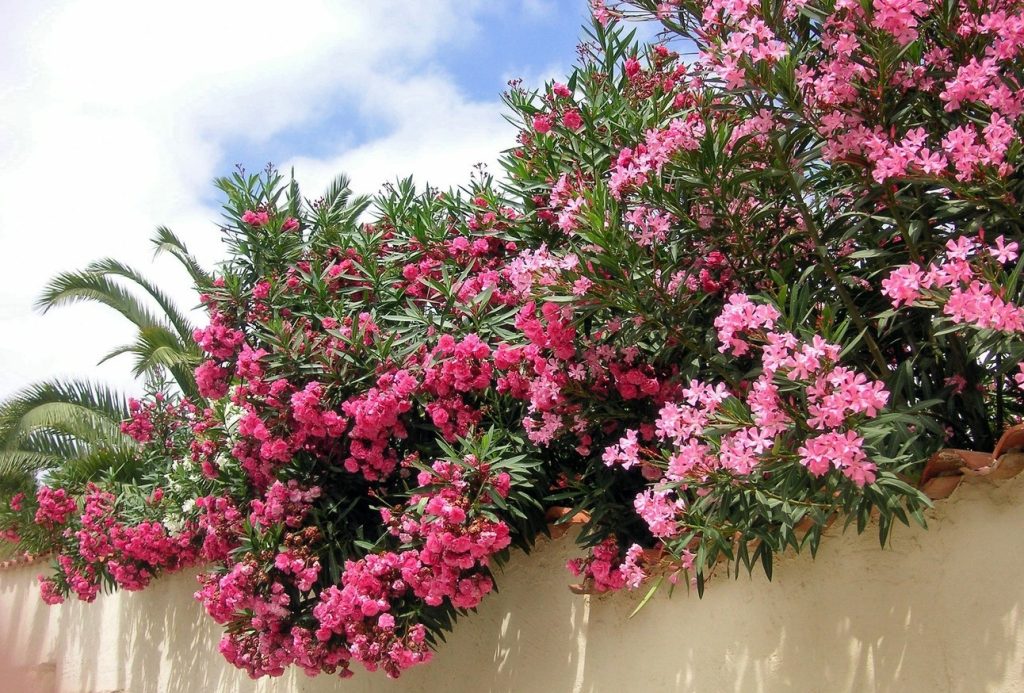
thanks to its stunning beauty and easy care. This evergreen shrub boasts long, lance-like leaves that are glossy and dark green in color. In the summer months, Oleander produces masses of fragrant flowers in shades ranging from white to pink and red.
One of the most attractive features of Oleander is that it is drought-tolerant once established. This makes it perfect for those who live in areas with dry climates or who want a low-maintenance plant in their garden. Additionally, Oleander is highly adaptable, growing well in both full sun and partial shade.
However, it’s important to note that all parts of the Oleander plant are toxic if ingested. For this reason, it’s recommended that you wear gloves when handling this shrub and keep it away from children and pets. If you’re looking for a hardy shrub with stunning blooms that requires minimal maintenance, then Oleander may be just what you need for your landscape or garden design.
Oleander is an impressive shrub that will add beauty and interest to your landscape garden! This evergreen plant is known for its showy, fragrant flowers in shades of pink, red, white, and yellow. Additionally, its long, narrow leaves add texture and interest throughout the year.
Oleander is an adaptable plant that requires little upkeep and watering, making it perfect for busy gardeners. You can grow it as either a large shrub or prune into a small tree depending on your preference. Oleander prefers full sun and well-draining soil but can also tolerate some drought conditions and salt spray – making it suitable for coastal gardens.
Oleander not only attracts beauty and hardiness to your garden, but it’s also an excellent plant for pollinators. Its fragrant flowers attract butterflies and hummingbirds too, adding even more life and interest to your landscape.
However, it’s essential to be aware that Oleander can be toxic if ingested, so it should not be planted near areas where children or pets might play. With proper care and consideration, however, Oleander can make for a stunning addition to any landscape garden.
Overall, Oleander is an ideal choice for gardeners searching for a low-maintenance shrub to add visual interest and aesthetic value to their landscape. With its stunning flowers, captivating foliage, and hardy nature, this plant will surely be the star of your show in your yard!
Oleander is an ideal shrub for mild climates. It produces stunning flowers in shades such as pink, white and red. Being drought-resistant and needing minimal upkeep makes it the ideal choice for busy gardeners; Oleander can be used as a hedge, border or specimen plant.
Sweet Olive:
Sweet Olive! This evergreen shrub is known for its small, fragrant flowers that bloom in the fall and winter, filling your garden with a sweet, citrusy scent.
The Sweet Olive, also known as Osmanthus fragrans, is a slow-growing shrub that can reach up to 20 feet tall and wide if left unpruned.Its dark green, glossy leaves add visual interest and texture to your garden year-roundAlthough it prefers partial shade and well-draining soil, it can also tolerate full sun and some drought conditions.
Sweet Olive not only attracts beautiful butterflies and bees to your garden, but its small flowers also add life and interest to the landscape. Its lovely fragrance also plays a major role in drawing in pollinators!
The Sweet Olive can be utilized in many ways in your landscape garden. As a focal point to add visual interest and fragrance, or as an accent hedge or border plant, it looks stunning when combined with other flowers or containers.
Overall, the Sweet Olive is an ideal choice for gardeners seeking a low-maintenance shrub to add visual interest and beauty to their landscape. With its stunning flowers, captivating foliage, and hardiness, this plant will remain popular for years to come.
This perennial plant boasts glossy green leaves and sweet-scented flowers that bloom during the autumn or winter months. It can grow up to 20 feet tall, though it usually needs pruning back to maintain its desired height.
Sweet Olive requires low maintenance and can thrive in a range of soil types, needing full sun to partial shade with regular watering during dry spells. With its pleasant fragrance, Sweet Olive makes an ideal addition for landscaping near outdoor seating areas or garden paths.
In addition to being a beautiful ornamental shrub, Sweet Olive also has cultural significance in China and Japan where it is used in tea ceremonies and as an ingredient in traditional medicine. Overall, Sweet Olive’s versatile nature makes it a valuable addition to any landscape or garden design.
Sweet Olive, also known as Osmanthus, is a fragrant evergreen shrub that is perfect for moderate climates. It produces small, inconspicuous flowers that emit a strong, sweet fragrance in the fall and winter. Sweet Olive prefers well-drained soil and partial shade, but can tolerate full sun with adequate moisture. It can be used as a hedge, border, foundation planting, or as a specimen plant.
Conclusion
When it comes to groundskeeping, foundation shrubs can serve as the foundation that your landscape is built upon.
These shrubs stand strong and tall against storms, pests, and other landscaping foes.
They provide stabilization and structure while still providing a variety of benefits.
When you are planning your landscape, include these sturdy shrubs design.


